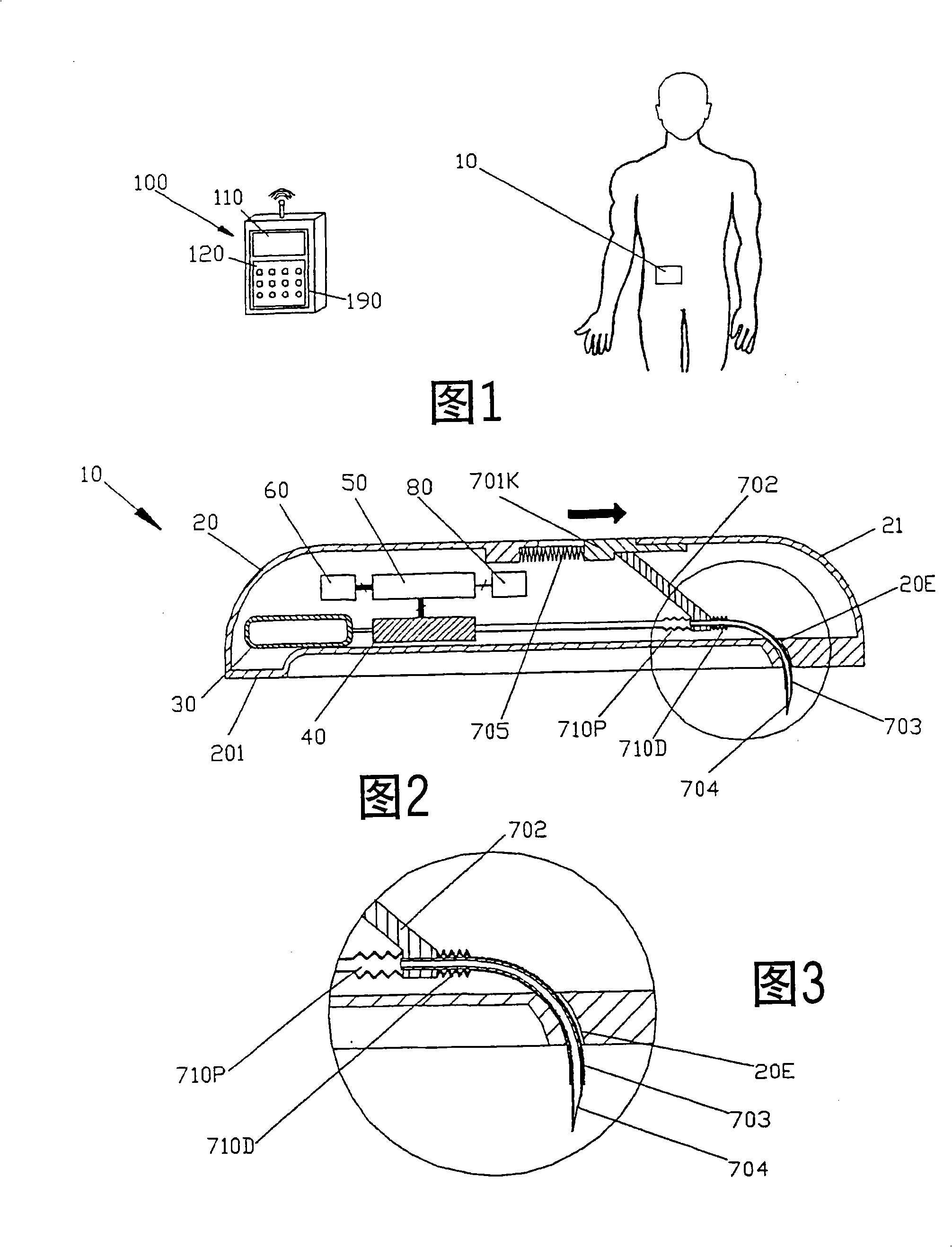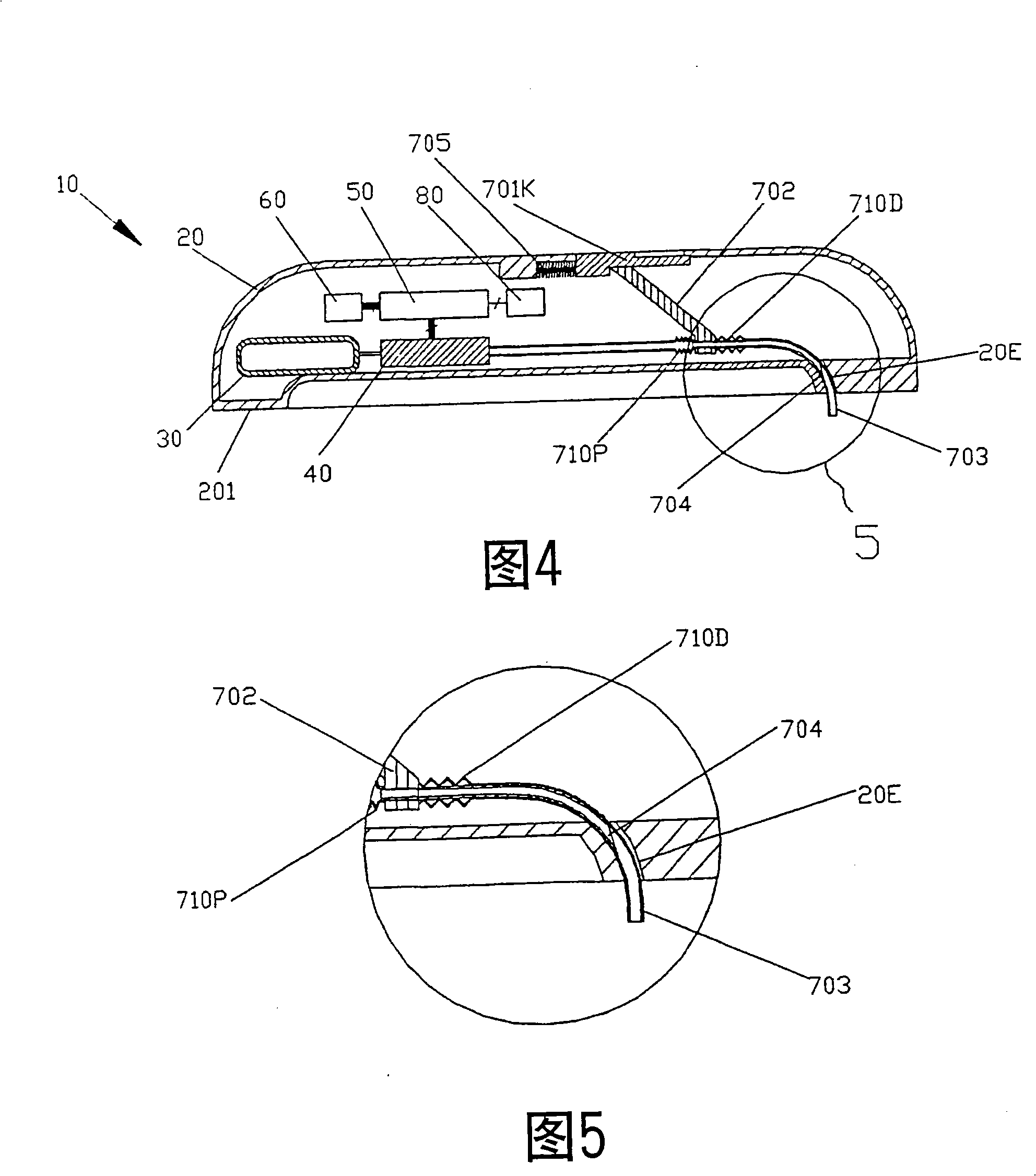Transcutaneous delivery means
A skin and subcutaneous infusion technology, applied in the directions of drug delivery, pharmaceutical formulations, drug devices, etc., can solve the problems of high price, limit the number of patients for treatment, etc., achieve great flexibility, and avoid the effect of moving the treatment cycle
- Summary
- Abstract
- Description
- Claims
- Application Information
AI Technical Summary
Problems solved by technology
Method used
Image
Examples
Embodiment Construction
[0058] Referring first to Figures 1 and 2, there is shown a fluid delivery device 10 manufactured in accordance with the present invention. The types of fluids that can be administered by the fluid delivery device of the present invention include: insulin, antibiotics, nutritional fluids, total parenteral nutrition or TPN, analgesics, morphine, hormones or hormonal drugs, gene therapy drugs, anticoagulants, analgesics , Cardiovascular drugs, AZT or chemotherapy, but not limited to this. The types of medical conditions that can be treated with the fluid drug delivery device of the present invention include: diabetes, cardiovascular disease, pain, chronic pain, cancer, AIDS, neurological disease, Alzheimer's disease, ALS, hepatitis, Parkinson's disease, or spasm.
[0059] Referring to FIG. 2, the device 10 generally includes an outlet assembly 70 having a percutaneous piercing tool for the patient, a dispenser 40 that allows fluid to flow from the reservoir 30 to the outlet assembly...
PUM
 Login to View More
Login to View More Abstract
Description
Claims
Application Information
 Login to View More
Login to View More - R&D
- Intellectual Property
- Life Sciences
- Materials
- Tech Scout
- Unparalleled Data Quality
- Higher Quality Content
- 60% Fewer Hallucinations
Browse by: Latest US Patents, China's latest patents, Technical Efficacy Thesaurus, Application Domain, Technology Topic, Popular Technical Reports.
© 2025 PatSnap. All rights reserved.Legal|Privacy policy|Modern Slavery Act Transparency Statement|Sitemap|About US| Contact US: help@patsnap.com



